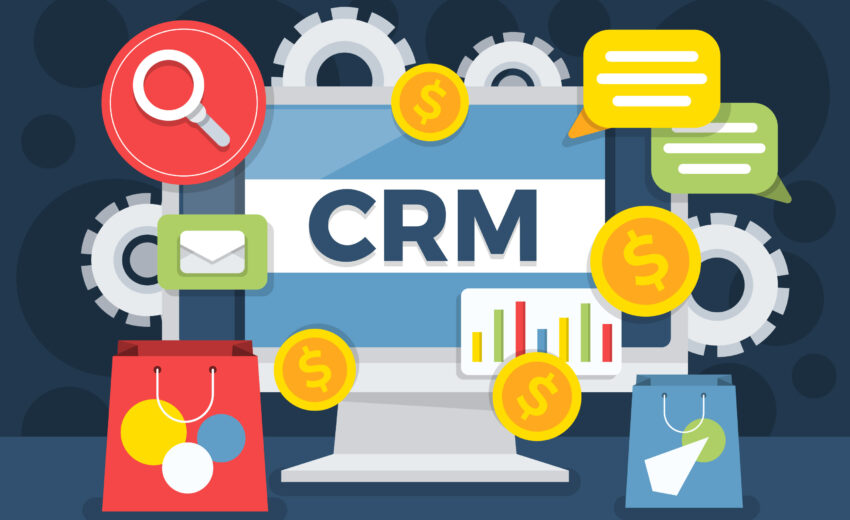In today’s competitive business landscape, maintaining strong relationships with customers is crucial for sustained growth and success. Companies must effectively manage their interactions with clients to meet their needs and expectations. SAP Business One (B1) is an integrated enterprise resource planning (ERP) solution designed specifically for small to medium-sized enterprises (SMEs). It offers comprehensive functionalities, including Customer Relationship Management (CRM) tools that help businesses streamline their customer interactions, improve service delivery, and enhance customer satisfaction.
This article delves into the role of SAP Business One in CRM, exploring its features, benefits, and best practices for leveraging this powerful tool to optimize customer relationships. As a leading SAP Business One solutions provider, Tekroi aims to help organizations utilize SAP Business One effectively for their CRM needs.
Understanding Customer Relationship Management (CRM)
Customer Relationship Management is a strategy that businesses use to manage interactions with potential and current customers. The goal of CRM is to improve business relationships, enhance customer retention, and ultimately drive sales growth. A robust CRM system allows organizations to:
- Store customer information
- Track customer interactions
- Manage customer inquiries and issues
- Analyze customer data for insights
Key Components of CRM
Customer Data Management: Storing and managing customer information, including contact details, purchase history, and preferences.
Sales Management: Monitoring sales activities, managing pipelines, and tracking performance metrics.
Marketing Automation: Automating marketing campaigns, managing leads, and analyzing campaign performance.
Customer Service and Support: Handling customer inquiries, complaints, and service requests effectively.
Analytics and Reporting: Providing insights into customer behavior and preferences to drive decision-making.
The Role of SAP Business One in CRM
SAP Business One integrates all the essential elements of CRM into a single, unified platform. By providing comprehensive features tailored for customer management, SAP Business One empowers businesses to enhance their customer relationships and drive growth.
1. Centralized Customer Information
One of the core functionalities of SAP Business One is its ability to centralize customer data. This feature allows businesses to store and manage all customer-related information in one location.
Customer Profiles: Users can create detailed profiles for each customer, capturing essential information such as contact details, preferences, and communication history.
360-Degree View: By consolidating data from various sources, businesses gain a 360-degree view of their customers, enabling personalized interactions and tailored marketing efforts.
2. Streamlined Sales Processes
SAP Business One enhances the sales process through automation and efficient workflow management. Key features include:
Lead and Opportunity Management: Sales teams can track leads, manage opportunities, and monitor sales activities in real time, ensuring that no potential sale is missed.
Quotations and Orders: The system allows for quick generation of quotations and order processing, reducing turnaround times and improving customer satisfaction.
Sales Forecasting: By analyzing historical sales data, businesses can forecast future sales trends, enabling better planning and resource allocation.
3. Enhanced Customer Service
Excellent customer service is critical for maintaining strong relationships. SAP Business One offers several features that help businesses deliver superior customer support:
Service Management: The service management module allows businesses to manage customer service requests efficiently. Service agents can track inquiries, assign tasks, and monitor response times to ensure timely resolution.
Service Contracts: Businesses can manage service contracts, warranties, and maintenance schedules, ensuring that customers receive the support they need.
Customer Feedback: Integrating feedback mechanisms helps organizations gather insights on customer satisfaction, enabling continuous improvement.
4. Marketing Automation and Campaign Management
SAP Business One offers marketing automation tools that enable businesses to plan, execute, and analyze marketing campaigns effectively.
Targeted Campaigns: Users can segment customers based on various criteria (e.g., demographics, purchase history) to create targeted marketing campaigns that resonate with specific audiences.
Email Marketing: The system allows for automated email campaigns, ensuring that the right message reaches the right customers at the right time.
Campaign Performance Tracking: Businesses can analyze campaign performance metrics, enabling data-driven decisions for future marketing strategies.
5. Data Analytics and Reporting
SAP Business One provides powerful analytics and reporting capabilities that help businesses make informed decisions.
Real-Time Reporting: Users can generate real-time reports on sales performance, customer interactions, and service levels, enabling timely interventions and strategy adjustments.
Business Intelligence Tools: The system incorporates business intelligence tools that allow organizations to analyze customer behavior, identify trends, and forecast future needs.
6. Integration with Other Business Functions
SAP Business One seamlessly integrates CRM functionalities with other business functions, such as finance, inventory, and supply chain management. This integration ensures that customer interactions are aligned with overall business operations, leading to improved efficiency and customer satisfaction.

Benefits of Using SAP Business One for CRM
Implementing SAP Business One for CRM provides numerous benefits for organizations looking to enhance their customer relationship strategies.
1. Improved Customer Retention
By providing a centralized platform for managing customer interactions, SAP Business One helps businesses deliver personalized experiences that foster loyalty.
2. Increased Sales Efficiency
The streamlined sales processes, automated workflows, and comprehensive sales tracking features lead to increased efficiency and productivity within sales teams.
3. Enhanced Decision-Making
Real-time analytics and reporting empower businesses to make informed decisions based on accurate data, leading to better resource allocation and strategic planning.
4. Better Customer Insights
The 360-degree view of customer data enables organizations to understand their customers’ needs and preferences, allowing for targeted marketing efforts and improved service delivery.
5. Cost Savings
By automating various CRM processes, businesses can reduce manual labor, minimize errors, and cut operational costs.
6. Scalability
As a cloud-based solution, SAP Business One offers scalability, allowing businesses to easily adapt to changing needs and growth requirements without significant infrastructure changes.
Best Practices for Leveraging SAP Business One in CRM
To maximize the benefits of SAP Business One for CRM, organizations should consider the following best practices:
1. Customize SAP Business One to Fit Your Business Needs
While SAP Business One offers numerous out-of-the-box features, organizations should customize the platform to align with their specific processes and customer interactions. Work with a certified SAP Business One solution provider like Tekroi to tailor the system to your unique requirements.
2. Invest in User Training
Proper training is essential for ensuring that employees can effectively utilize SAP Business One’s CRM features. Invest in comprehensive training programs to empower users and enhance their proficiency in using the system.
3. Foster Cross-Department Collaboration
Encourage collaboration between sales, marketing, and customer service teams to ensure a cohesive approach to customer relationship management. Leveraging SAP Business One’s integration capabilities facilitates communication and data sharing across departments.
4. Regularly Review and Optimize Processes
Continuously evaluate CRM processes to identify areas for improvement. Use analytics and reporting tools within SAP Business One to assess performance and make data-driven adjustments.
5. Gather Customer Feedback
Implement feedback mechanisms to gather insights from customers about their experiences with your products and services. Use this feedback to enhance your offerings and improve customer satisfaction.
Conclusion
SAP Business One plays a pivotal role in enhancing customer relationship management for small and medium-sized enterprises. By offering integrated functionalities for sales, marketing, and customer service, SAP Business One enables businesses to streamline their customer interactions and drive growth.
As a leading SAP Business One solutions provider, Tekroi is dedicated to helping organizations optimize their CRM strategies through effective utilization of SAP Business One. Whether you are seeking SAP Business One solutions or looking for the best SAP Business One partner, Tekroi has the expertise and resources to support your CRM needs.
FAQs
SAP Business One is an integrated ERP solution designed for small to medium-sized enterprises, offering functionalities for finance, operations, sales, customer relationship management, and more.
SAP Business One enhances CRM by centralizing customer data, streamlining sales processes, improving customer service, and providing powerful analytics and reporting capabilities.
Yes, SAP Business One seamlessly integrates CRM functionalities with other business functions such as finance, inventory, and supply chain management.
Benefits include improved customer retention, increased sales efficiency, enhanced decision-making, better customer insights, cost savings, and scalability.
Work with a certified SAP Business One solution provider like Tekroi to tailor the platform to meet your specific business needs and processes.
Comprehensive training programs are available to help users understand and effectively utilize SAP Business One’s CRM features, enhancing their proficiency in the system.
Implement feedback mechanisms such as surveys and follow-up communications to gather insights from customers about their experiences with your products and services. Use this feedback to improve customer satisfaction and service delivery.







